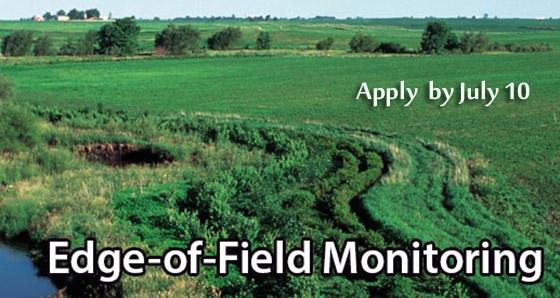Posted June 1, 2017 at 05:57pm by Amy Overstreet
Funding Available in Vermont to Help Farmers Measure Impacts on Water Quality

The U.S. Department of Agriculture (USDA) recently announced the availability of funding to help farmers install edge-of-field stations that monitor water quality as it leaves their fields, providing data to evaluate the success of various conservation efforts. The funding is available to farmers located across key watersheds in three states, including Vermont, and is part of USDA’s ongoing commitment to measure the effectiveness of a wide range of conservation initiatives. Applications are due by July 10, 2017.
The financial assistance is available through the USDA-Natural Resources Conservation Service (NRCS) Environmental Quality Incentives Program (EQIP). Eligible farmers who receive funding can install and maintain the monitoring systems for up to nine years, giving time to measure the impact of conservation systems on water quality under different conditions.
Farmers are already using edge-of-field monitoring data to adjust their strategies to improve the quality of water, soil and other natural resources within their operations. Vermont NRCS State Conservationist Vicky Drew said that eight edge-of-field monitoring stations have been hosted in the state since 2011.
In the longer term, data collected from many sources will help producers make the most informed conservation investments possible and document how edge-of-field monitoring of conservation work benefits the public and communities.
Testing the quality of water as it leaves a field helps farmers and NRCS understand which conservation practices work best at preventing sediment and nutrient runoff. Verifiable data gives farmers, NRCS and other partners information needed to make targeted conservation investments to improve water quality. “This technology is a great tool to aid in our efforts to protect and improve water quality in Lake Champlain,” said Drew.
Contact your local VT NRCS field officeto submit an application before the July 10 deadline.
For the latest conservation updates, follow Vermont NRCS on Twitter @VermontNRCS  .
.
